Kent, Connecticut | Could You Live Here?
An unbeatable pick for fall foliage, the rustic hill town of Kent, Connecticut, pulses with culture, history, and a timeless community spirit.
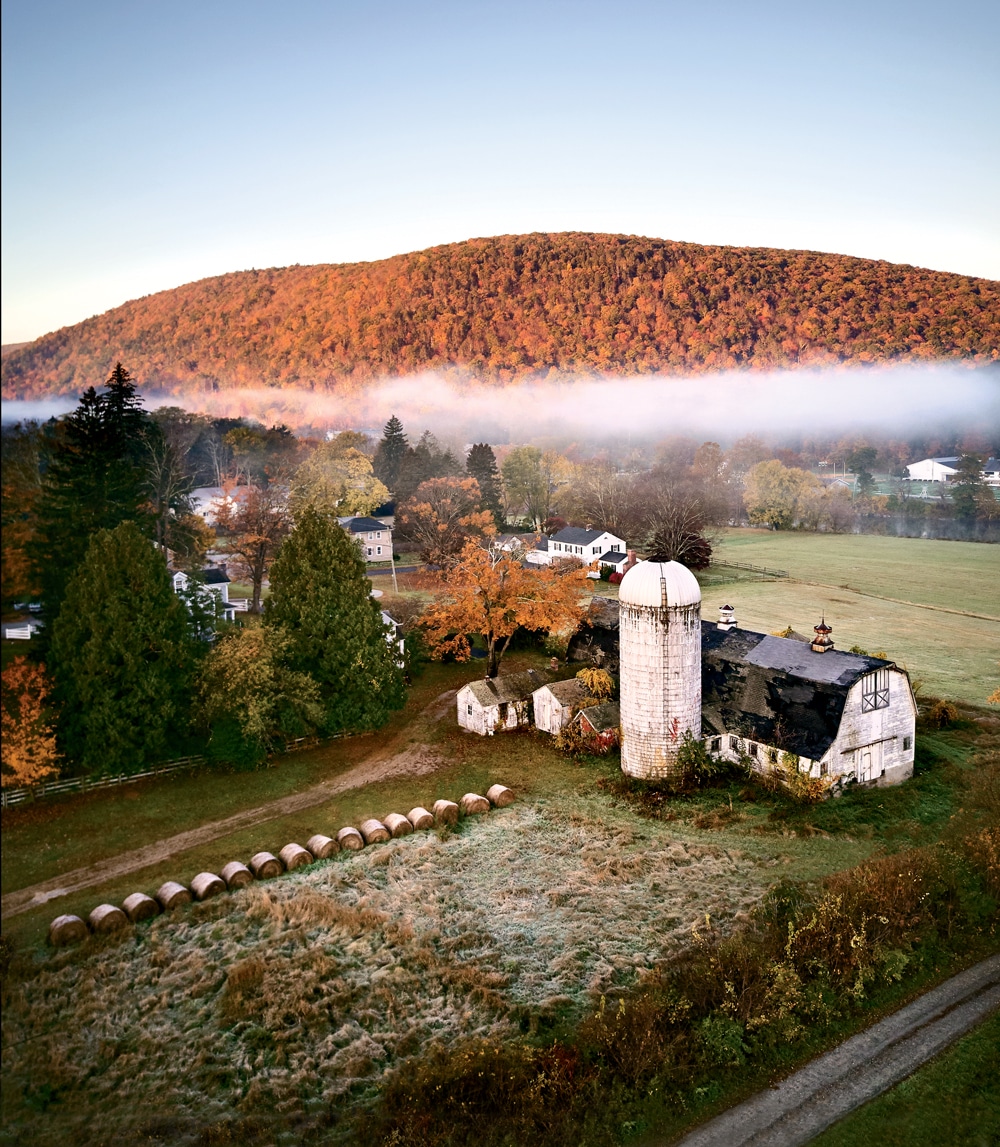
Mist floats above the Housatonic River as it runs past a time-weathered farm near downtown Kent.
Photo Credit : Mark FlemingWhen sharp exhales of steam are interrupted by a toot-toot blast, you’ll know the 1925 Baldwin locomotive is about to make its squeaking, swaying way down the tracks. Behind a curtain of brink-of-autumn-burnished hillsides, hit-and-miss engines putt-putt-BANG in time with a sawmill’s tuneful whine. The blacksmith shop emits percussive clanging; industrial flywheels whoosh and click; the rock crusher delivers its metallic, hammering crunch. It’s the music of pre-electric-age rural America: a bygone symphony of raw power, replayed the last weekend of September at the Connecticut Antique Machinery Association’s ever-expanding, three-day fall festival in Kent.
Soon, golden and ruddy colors will glaze the Berkshire foothills. In the eight years since Yankee named Kent—this iron-rich town that once cradled America’s mining industry—New England’s best for fall foliage, something approaching the miraculous has occurred. Even as shops and restaurants clustered around a lone traffic light have stepped up in sophistication, the landscape has hopscotched back toward 1781, when George Washington’s horse tumbled off Bull’s Bridge.

Photo Credit : Mark Fleming
More wooded, more agrarian, more alluring for autumn seekers, Kent has benefited from a spike in land trust acquisitions and agricultural enterprises, including Connecticut’s first farm brewery, Kent Falls Brewing Co. Walk the crackled road into the 263-acre, trail-laced East Kent Hamlet Nature Preserve, and you can watch nature regain its hold. Weeds ensnare the structural remains of this abandoned Girl Scout camp. Hydrangea shrubs run amok. Trees seem determined to earn reforestation merit badges.
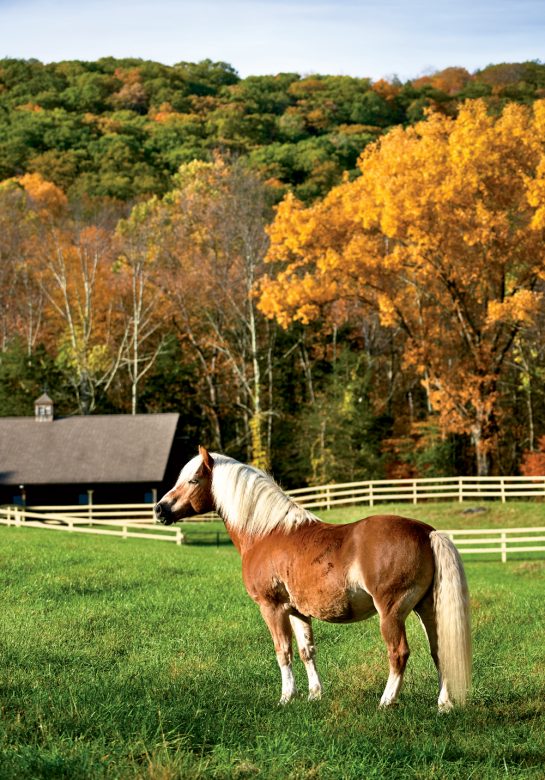
Photo Credit : Mark Fleming
Kent’s location—80 miles from New York City—creates just the right conditions for a distinctive way of life to thrive, for a back-in-time aura to permeate Connecticut’s first small town to launch its own app. Almost everyone here seems to be from somewhere else. They crave a quiet country life but can’t quite sever the urban umbilical cord. They want their legacies written in lands forever preserved and antique homes restored, not in the tabloids. There are no barriers to being yourself in Kent, where people are known for their talents. As “guitar guy” Charlie Gelber says: “You’re part of the town as soon as you’re in the town.”
The Setting
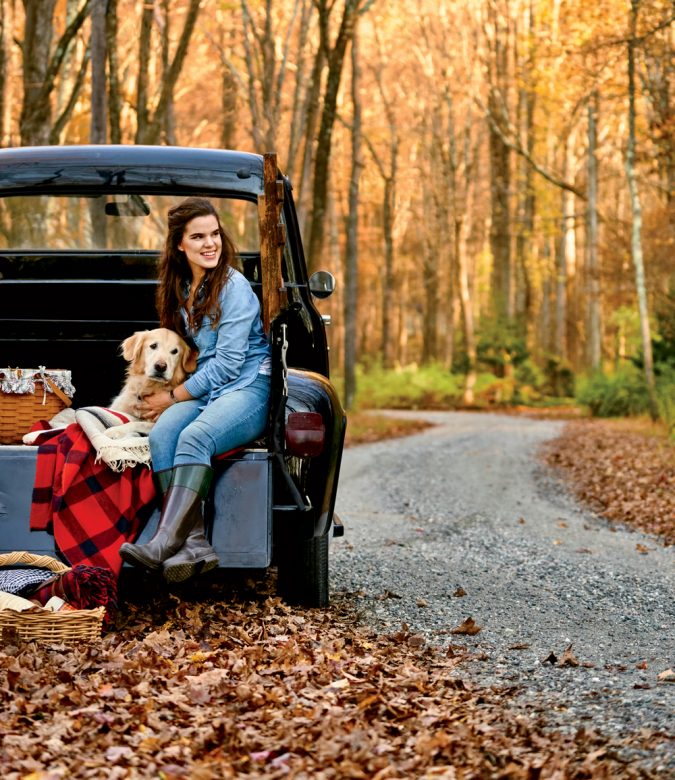
Photo Credit : Mark Fleming
Motor past Treasure Hill Road’s neat stone walls, red barns, and tilted silos, and you’re inside a scene splashed across tourism brochures for western Connecticut’s Litchfield Hills. Yet from Kent’s energetic center, at the intersection of Route 341 and Housatonic River–chasing Route 7, it’s a mere 10-minute drive across the New York line to a Metro-North train station. Call it faux isolation, but over the years the blend of rural beauty and modern sophistication has lured writers, fashion designers, diplomats, actors, and musicians to take up residence here. Every weekend, its famous state parks, waterfalls, covered bridges, and hiking trails bring visitors seeking a quiet retreat or outdoor adventures—or both.
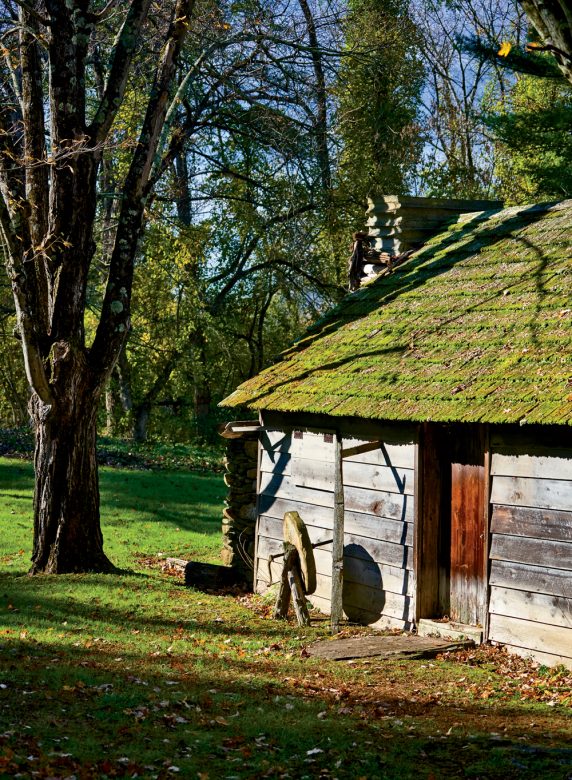
Photo Credit : Mark Fleming
The Social Scene
Local color doesn’t fade as leaves fall. On October’s final Sunday—one week after Kent wraps a three-day stint playing fictional town Stars Hollow for the Gilmore Girls Fan Fest—spectators line the five-mile Pumpkin Run course to cheer for 600-plus competitors, many in costume. It’s a spectacle with a charitable purpose, like so many events that define this community of nearly 3,000 year-round residents. With more than 30 nonprofits angling for support, volunteerism fuels deep friendships and camaraderie. When Annie Bananie Ice Cream’s Anne McAndrew was diagnosed with cancer in 2007, “this town fed my family for eight weeks,” she says.
Eating Out
The duality of chef-owner Joel Viehland’s fine and casual dining ventures, Ore Hill and Swyft, befits Kent’s alter egos. Side-by-side in an exactingly renovated 18th-century homestead owned by philanthropist Anne Bass, they’re the only restaurants sourcing meats, dairy products, vegetables, and even citrus from her nearby Rock Cobble Farm. Nab a stool at Swyft’s white oak bar, sip Multiverse (Kent Falls Brewing Co.’s rich and roasty stout), and order a wood-fired, all-from-scratch sourdough pizza. You’re as likely to hobnob with local celebs here as you would be on the building’s upscale side, Ore Hill, where the James Beard Award–nominated chef conjures multicourse tasting experiences.

The diner-ish Villager stuffs the breakfast crowd with hash brown burritos; J.P. Gifford Market cranks out toasty sandwiches perfect for picnics beside shimmering Kent Falls. And the Fife ’n Drum, with its tableside flambés and 7,000-bottle wine cellar, marches on, feeding locals and wanderers including loyal alumni of Kent’s three private schools.
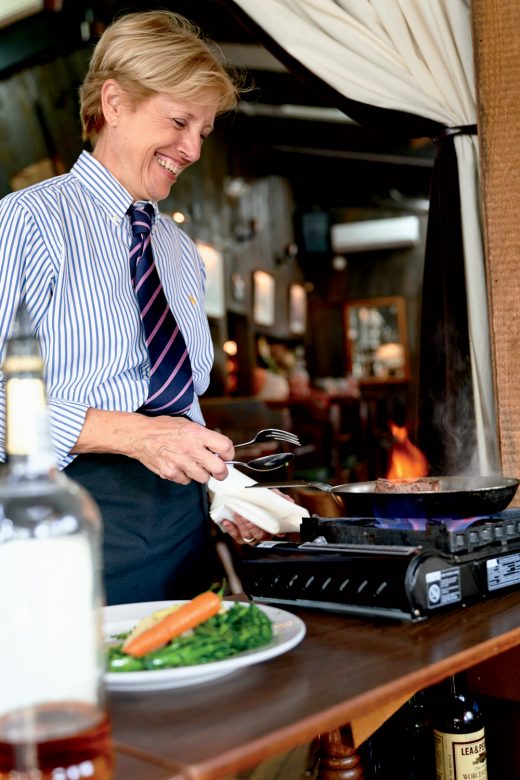
Photo Credit : Mark Fleming

Photo Credit : Mark Fleming
In her crisp striped shirt, Elissa Potts keeps the 45-year-old business humming. After her dad, legendary piano man Dolph Traymon, passed away, “the silence was deafening,” she says, but serendipity brought pianist Roger Young to the Fife and the keys back to life.
Shopping
There are seven hard-core art galleries to explore… eight if you count OK Guitars. In a red caboose, Charlie Gelber hangs polished vintage Gibsons with all the care of a conservator. Blood, Sweat & Tears guitarist Steve Katz was the first customer through the door. You don’t need rock cred to ask to play; Gelber might jam along.
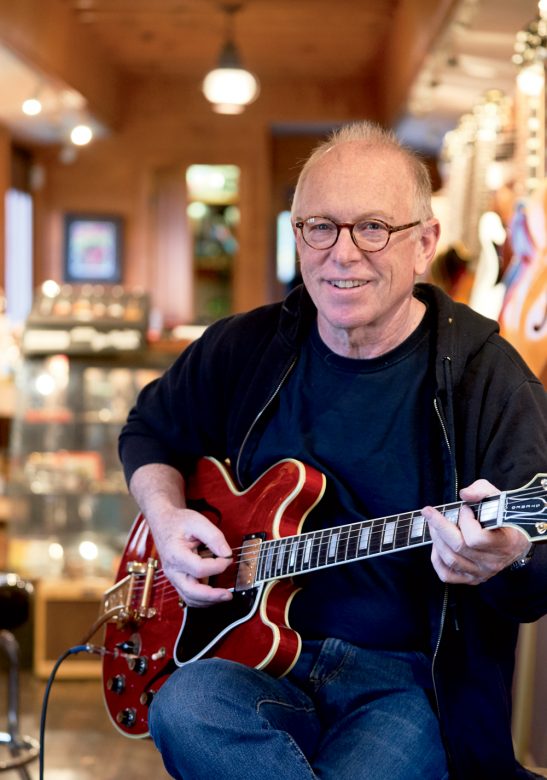
Photo Credit : Mark Fleming
It’s an interactive treasure hunt when every Main Street shop is independently owned. Credit oldest store Foreign Cargo with blazing this path. Second-generation proprietor Jeff Kennedy fills every nook with imported antiques, clothing, and traditional handicrafts. “Things we sold for $500 could be worth $500,000,” he says of items that have been swept up since his well-traveled mother, Olga, set up shop in 1970. “They’re so rare. They’re in museums.”
Shopkeepers’ collaborative spirit adds to the fun. Thousands of Champagne Stroll ticketholders will sample bubblies at 30 festive stores on the Friday and Saturday after Thanksgiving.
Uniquely Kent
A hedge fund manager and an Appalachian Trail hiker walk into a bar. In Kent, that’s a routine occurrence, not some punchline setup. The five-mile River Walk is a worthy day trek and a stretch beloved by hikers tackling the Appalachian Trail’s entire 2,190 miles. A life-size stainless-steel hiker by local sculptor W. David Herman is depicted in full stride in front of Kent’s new welcome center; at the coin-operated shower in the back, two bucks buys four minutes of hot water.
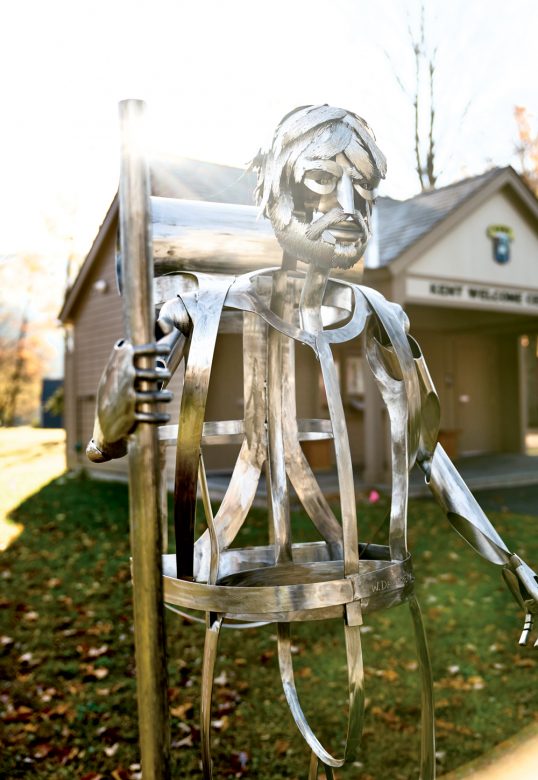
Photo Credit : Mark Fleming
Getting Your Bearings
Fall nights sell out fast at the Fife ’n Drum’s 13-room in-town inn and at the Inn at Kent Falls, a colonial-era stunner up the road. Airbnb supplements the town’s limited lodgings with a slew of options. Invite friends to share a unique retreat like Spirit Horse Farm, whose handsome converted post-and-beam barn sleeps six or more.
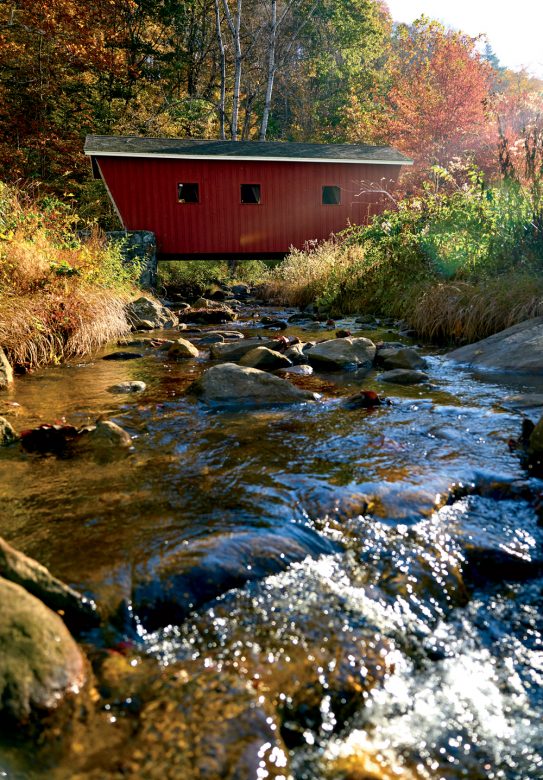
Photo Credit : Mark Fleming
If You Could Live Here
It’s hard not to be smitten with listings such as a Revolutionary War general’s 1795 home on nearly two acres. Priced at $425,000, it comes with original features: hand-hewn beams, chestnut floorboards, and a beehive oven. Meanwhile, a $550,000 log cabin has 38 private acres, plus 270 land trust acres in its backyard.
SEE MORE: Scenes from Kent, Connecticut
Kim Knox Beckius
Kim Knox Beckius is Yankee Magazine's Travel & Branded Content Editor. A longtime freelance writer/photographer and Yankee contributing editor based in Connecticut, she has explored every corner of the region while writing six books on travel in the Northeast and contributing updates to New England guidebooks published by Fodor's, Frommer's, and Michelin. For more than 20 years, Kim served as New England Travel Expert for TripSavvy (formerly About.com). She is a member of the Society of American Travel Writers (SATW) and is frequently called on by the media to discuss New England travel and events. She is likely the only person who has hugged both Art Garfunkel and a baby moose.
More by Kim Knox Beckius

